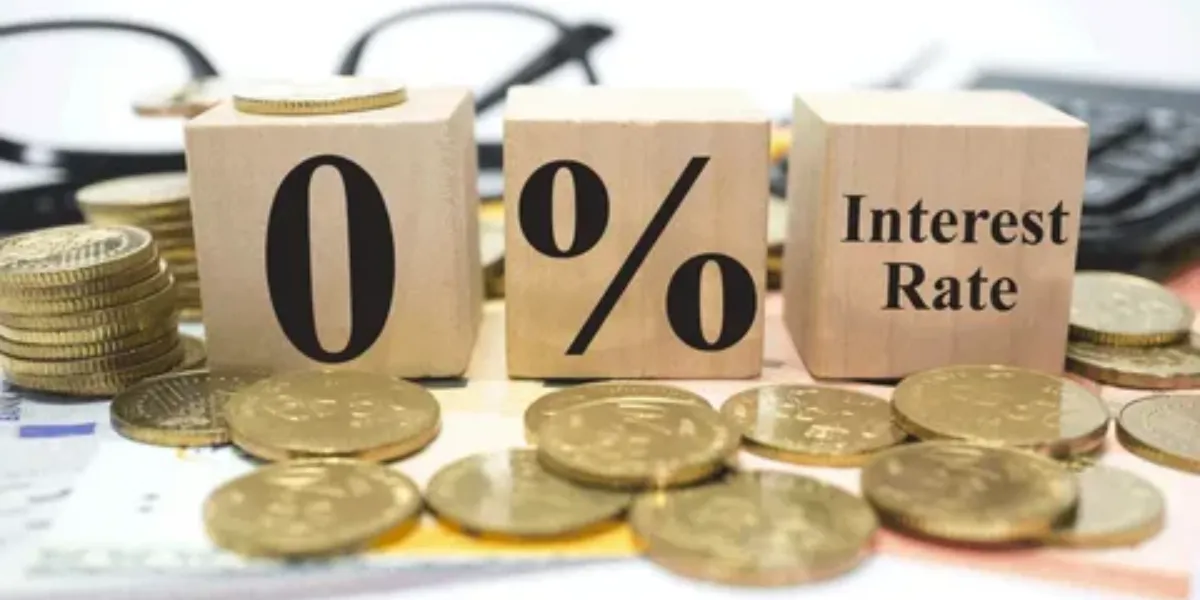Interest Rates Reach Record Low: What It Means for Borrowers
When interest rates reach record lows, it signifies that the cost of borrowing money is at its lowest point in recent history. This development has significant implications for borrowers across various sectors, including individuals, businesses, and even governments. Here’s what it means for borrowers:
Lower Borrowing Costs:
With record-low interest rates, borrowers can access loans at lower costs. This is particularly advantageous for individuals seeking mortgages, car loans, or personal loans, as the interest payments they need to make over the loan term are reduced.
Affordability:
Lower interest rates make borrowing more affordable. For example, potential homeowners can secure mortgages with lower monthly payments, allowing them to afford homes that might have been out of reach with higher interest rates.
Stimulus for Spending:
Reduced borrowing costs can stimulate consumer spending. When individuals pay less interest on loans, they may have more disposable income to spend on goods and services, thereby boosting economic activity.
Business Expansion:
Lower interest rates also benefit businesses looking to expand operations or invest in new projects. Cheaper loans mean lower financing costs, which can improve profit margins and encourage business growth.
Refinancing Opportunities:
Homeowners and businesses with existing loans may consider refinancing at lower rates to reduce their monthly payments or shorten the loan term, potentially saving money over time.
Government Borrowing:
Governments can also benefit from lower interest rates when issuing bonds or financing public projects. This can lead to reduced government borrowing costs and may free up funds for other public investments or services.
Investment in Assets:
Lower interest rates can incentivize investment in assets such as real estate and stocks, as the cost of financing these investments decreases.
Caution for Savers:
On the flip side, savers might see lower returns on savings accounts and fixed-income investments like bonds. This could encourage some to seek higher-yielding investments or adjust their financial strategies.
Potential Inflation Impact:
While lower interest rates can stimulate economic growth, they may also contribute to inflationary pressures if demand for goods and services outpaces supply. Central banks often monitor inflation closely and may adjust interest rates accordingly to maintain price stability.
Future Considerations:
Borrowers should consider the potential for interest rates to change in the future. While low rates offer current advantages, they may not last indefinitely, and borrowers should plan for potential rate increases down the line.
In summary, when interest rates reach record lows, it generally means improved affordability for borrowers across the board, stimulating economic activity through increased spending, investment, and growth opportunities. However, borrowers should also remain mindful of economic conditions and future rate movements to make informed financial decisions.
Outlook Brightens  with Interest Rate Drop
with Interest Rate Drop
When the economic outlook brightens due to a drop in interest rates, it indicates several positive developments and expectations for the economy:
Stimulus for Borrowers:
Lower interest rates reduce the cost of borrowing for consumers, businesses, and governments. This typically leads to increased borrowing and spending, as loans become more affordable. For example, businesses may borrow more to expand operations or invest in new equipment, while consumers may take out mortgages or loans for big-ticket purchases.
Boost to Consumer Spending:
With reduced borrowing costs, consumers often have more disposable income available. Lower interest rates on credit cards, mortgages, and other loans mean lower monthly payments, freeing up money for discretionary spending on goods and services. This increased consumer spending can stimulate economic growth and support businesses.
Support for Housing Market:
Lower mortgage rates make homeownership more affordable, potentially boosting demand for homes. This can lead to an uptick in home sales, construction activity, and related industries, such as home improvement and furnishings.
Encouragement for Investment:
Lower interest rates can incentivize investment in capital projects and infrastructure by reducing the cost of financing. Businesses may be more inclined to undertake expansions, technology upgrades, and other investments that can improve productivity and competitiveness.
Stock Market Response:
The stock market often responds positively to lower interest rates, as investors seek higher returns compared to fixed-income investments like bonds. This can lead to higher stock prices, which can improve consumer wealth and confidence.
Currency Effects:
Lower interest rates can also impact currency exchange rates. In some cases, a decrease in interest rates relative to other countries may lead to a weaker currency, which can benefit exporters by making their goods more competitive in international markets.
Government and Fiscal Policy:
Lower interest rates can ease the burden of government debt service payments, allowing governments to allocate resources to other priorities such as infrastructure, education, or healthcare.
Inflation Management:
Central banks often use interest rates as a tool to manage inflation. When inflation is low and stable, it creates a favorable environment for economic growth and consumer confidence.
Caution for Savers:
While lower interest rates benefit borrowers, they can reduce returns on savings accounts, bonds, and other fixed-income investments. Savers may need to seek higher-yielding investments or adjust their financial strategies to maintain their income levels.
Long-Term Considerations:
The impact of lower interest rates on the economy can vary over time. Central banks monitor economic indicators closely and may adjust interest rates in response to changing economic conditions, aiming to achieve sustainable economic growth and stability.
In conclusion, a drop in interest rates brightens the economic outlook by stimulating borrowing, spending, and investment, supporting consumer and business activity, and potentially fostering economic expansion. However, the broader effects depend on various factors including inflation trends, global economic conditions, and policy responses from central banks and governments.
Investing Opportunities Soar as Interest Rates Decrease
When interest rates decrease, it opens up a range of investing opportunities across various asset classes. Here’s a detailed explanation of how investing opportunities soar as interest rates decline:
Lower Cost of Borrowing:
Decreasing interest rates reduce the cost of borrowing money for individuals, businesses, and governments. This can lead to increased capital investment, expansions, and other growth initiatives by businesses, which can potentially enhance their profitability and stock performance.
Equity Markets:
Lower interest rates generally have a positive impact on equity markets. As borrowing costs decrease, companies may see improved profitability due to lower interest expenses. This can boost investor confidence and drive stock prices higher.
Dividend Stocks:
Lower interest rates can make dividend-paying stocks more attractive to investors seeking income. As bond yields and savings account interest rates decline, dividend stocks may offer comparatively higher yields, potentially attracting income-focused investors.
Real Estate:
Lower interest rates typically translate into lower mortgage rates, making real estate investments more affordable for buyers. This can stimulate demand for residential and commercial properties, leading to increased property values and rental income potential.
REITs (Real Estate Investment Trusts):
REITs often benefit from lower interest rates as they can refinance existing debt at lower costs, improving their profitability and potentially increasing dividends for investors.
Bond Market:
In the bond market, falling interest rates generally lead to higher bond prices. This is because existing bonds with higher interest rates become more valuable in a lower-rate environment. Investors may consider reallocating their portfolios to include bonds with higher yields before rates decline further.
Fixed-Income Investments:
While interest rates on new bonds may decrease, existing bonds with higher coupon rates can become more attractive in the secondary market. Investors holding these bonds can benefit from capital appreciation as their prices rise.
Consumer Discretionary Stocks:
Lower interest rates can increase consumer spending on discretionary items such as electronics, travel, and entertainment. Companies in these sectors may experience higher sales and improved profitability, potentially leading to stock price appreciation.
Technology and Growth Stocks:
Technology and growth-oriented companies often benefit from lower borrowing costs as they invest in research and development, expand their operations, and pursue innovation. Lower interest rates can support these companies’ growth trajectories and contribute to higher stock valuations.
Currency Markets:
Lower interest rates can impact currency exchange rates. In some cases, a decrease in rates relative to other countries can lead to a weaker currency, which may benefit exporters but could pose challenges for import-dependent industries.
Emerging Markets:
Emerging markets may experience increased capital inflows as investors seek higher returns in a low-rate environment. However, currency fluctuations and geopolitical risks should be considered when investing in these markets.
Commodities:
Lower interest rates can potentially weaken the value of the currency in which commodities are priced, leading to higher commodity prices. Additionally, increased economic activity resulting from lower rates may drive demand for commodities such as oil and industrial metals.
In summary, investing opportunities soar as interest rates decrease due to enhanced affordability of borrowing, improved profitability for businesses, and attractive yields in equities and certain fixed-income instruments. However, investors should carefully assess their risk tolerance, investment goals, and economic outlook before adjusting their portfolios in response to changing interest rate environments.
How Lower Interest Rates Benefit Homebuyers

Lower interest rates can provide several significant benefits for homebuyers, influencing both affordability and the overall cost of purchasing a home. Here’s a detailed explanation of how lower interest rates benefit homebuyers:
Reduced Monthly Mortgage Payments:
One of the most direct benefits of lower interest rates is that they result in lower monthly mortgage payments for homebuyers. This occurs because the interest portion of the mortgage payment decreases, while the principal repayment remains unchanged.
Increased Purchasing Power:
Lower interest rates increase the amount of money homebuyers can borrow without increasing their monthly payments. This effectively boosts their purchasing power, allowing them to afford more expensive homes or properties that may have been previously out of reach.
Affordability:
With lower monthly mortgage payments, homes become more affordable for a broader range of potential buyers. This can stimulate demand in the housing market and support property values.
Cost Savings Over the Loan Term:
Homebuyers benefit from significant cost savings over the entire duration of the mortgage loan. Lower interest rates mean less interest paid over time, potentially saving tens of thousands of dollars over the life of the loan compared to higher rate scenarios.
Economic Stimulus:
Increased affordability and lower mortgage payments can stimulate economic activity. Homebuyers may redirect savings from lower mortgage payments towards other areas of the economy, such as consumer spending, investments, or home improvements.
Refinancing Opportunities:
Lower interest rates also create opportunities for existing homeowners to refinance their mortgages. Refinancing at a lower rate can reduce monthly payments, shorten the loan term, or allow homeowners to cash out equity for other purposes.
Stabilization of Housing Market:
Lower interest rates can help stabilize the housing market during economic downturns by encouraging home purchases and supporting property values. This can mitigate the impact of declining home prices and foreclosures.
First-Time Homebuyers:
Lower interest rates are particularly beneficial for first-time homebuyers who may have limited savings or income. Reduced mortgage payments make homeownership more accessible and less financially burdensome for these buyers.
Predictable Housing Costs:
Fixed-rate mortgages are common when interest rates are low, offering predictable housing costs over the long term. This stability can provide peace of mind to homeowners, knowing that their mortgage payments will remain consistent regardless of future interest rate fluctuations.
Investment Potential:
Lower interest rates can increase the attractiveness of real estate as an investment asset class. Investors may be incentivized to purchase rental properties or investment properties, anticipating favorable cash flows due to lower financing costs.
In conclusion, lower interest rates benefit homebuyers by increasing affordability, boosting purchasing power, reducing long-term costs, and potentially stimulating economic activity. However, individual financial circumstances and market conditions should be carefully considered when making decisions related to homebuying and mortgage financing.
Savings Accounts to Yield More with Decreased Interest Rates
When interest rates decrease, it affects savings accounts and the returns they offer to depositors. Here’s a detailed explanation of how savings accounts can yield more or less with decreased interest rates:
Impact on Savings Account Rates:
Savings accounts typically earn interest based on prevailing market interest rates. When central banks or financial institutions lower interest rates, savings account rates also tend to decrease. This means that the interest earned on savings deposits will be lower compared to periods when interest rates were higher.
Lower Earnings on Deposits:
As interest rates decline, the amount of interest earned on savings deposits decreases. This is especially noticeable in traditional savings accounts, where interest rates are often tied to short-term market rates set by central banks.
Adjustment in Yield Expectations:
Savers accustomed to higher interest rates may need to adjust their expectations regarding the yield on their savings. Lower rates mean that savings will accumulate less interest over time, potentially impacting long-term savings goals or retirement planning.
Less Attractive Returns:
Decreased interest rates make savings accounts less attractive as a tool for generating income or preserving wealth. Investors seeking higher returns may explore alternative investments such as bonds, stocks, or real estate, which offer potentially higher yields but also carry greater risk.
Impact on Financial Planning:
For individuals and households relying on interest income from savings accounts, lower rates can necessitate adjustments in financial planning. They may need to save more or consider alternative income sources to meet their financial goals.
Potential for Rate Fluctuations:
Interest rates can fluctuate over time in response to economic conditions, monetary policy decisions, and market dynamics. While rates may decrease initially, they could potentially rise in the future, influencing savings account returns accordingly.
Fixed vs. Variable Rates:
Some savings accounts offer fixed interest rates, which remain unchanged regardless of fluctuations in market rates. However, variable-rate savings accounts will adjust according to changes in prevailing interest rates, providing flexibility but potentially resulting in lower yields during periods of rate decreases.
Inflation Considerations:
In a low-interest-rate environment, savers should also consider the impact of inflation. If inflation rates exceed the interest earned on savings accounts, the purchasing power of savings may decrease over time, highlighting the importance of balancing savings strategies with inflation protection.
Safety and Liquidity:
Despite lower yields, savings accounts are valued for their safety and liquidity. They offer a secure place to store funds that can be easily accessed for emergencies or short-term financial needs, without exposure to market fluctuations or loss of principal.
Diversification:
Savers may choose to diversify their savings across different types of accounts and investments to balance risk and return. This could include allocating funds to higher-yielding investments with appropriate risk tolerance levels, while maintaining a portion in savings accounts for stability and liquidity.
In summary, while decreased interest rates generally result in lower yields on savings accounts, these accounts remain valuable for their safety, liquidity, and stability. Savers should consider their financial goals, risk tolerance, and the broader economic environment when making decisions about savings and investment strategies.
Impact of Fallin g Interest Rates on Credit Card Users
g Interest Rates on Credit Card Users
The impact of falling interest rates on credit card users can be significant and multifaceted, influencing both existing balances and future financial decisions. Here’s a comprehensive explanation of how decreasing interest rates affect credit card users:
Interest Savings on Existing Balances:
When interest rates fall, credit card users carrying balances from month to month benefit from lower finance charges. Interest is typically calculated daily based on the average daily balance, so a decrease in the annual percentage rate (APR) means lower interest expenses on outstanding balances.
Reduced Cost of Borrowing:
Lower interest rates make it cheaper for consumers to borrow money using credit cards. This can be advantageous for those who rely on credit for large purchases or emergencies, as they will pay less in interest charges over time compared to periods of higher rates.
Accelerated Debt Repayment:
With lower interest rates, more of the monthly payment goes towards reducing the principal balance rather than paying interest. This can accelerate the payoff of credit card debt for users who continue to make consistent payments.
Opportunity for Balance Transfers:
Falling interest rates may make balance transfer offers more attractive. Credit card issuers sometimes promote low or zero percent APR promotional periods on balance transfers, allowing users to consolidate debt from higher-interest cards and pay it down more quickly.
Encouragement for Consumer Spending:
Lower credit card interest rates can stimulate consumer spending by reducing the cost of financing purchases. This can be beneficial for the economy as increased consumer spending supports businesses and overall economic growth.
Credit Card APR Adjustments:
Credit card issuers may adjust the APRs on existing accounts in response to changes in broader interest rate trends. This can lead to lower minimum payments and overall interest costs for cardholders.
Impact on Variable APR Cards:
Many credit cards have variable APRs that are tied to an index, such as the prime rate. When interest rates decrease, variable APRs may also decline, directly benefiting cardholders with these types of cards.
Strategic Debt Management:
Lower interest rates provide an opportunity for credit card users to strategically manage their debt. This might involve prioritizing higher-interest debt repayment first or taking advantage of lower-cost financing options to pay down balances faster.
Long-Term Financial Planning:
Credit card users can use periods of lower interest rates to reassess their financial habits and develop long-term strategies for managing credit card debt more effectively. This may include budgeting, reducing reliance on credit, and building emergency savings.
Potential for Rate Increases:
While interest rates are currently low, they can fluctuate over time based on economic conditions and central bank policies. Cardholders should be aware that lower rates may not be permanent, and plan accordingly for potential rate increases in the future.
In summary, falling interest rates generally benefit credit card users by reducing interest costs, accelerating debt repayment, and potentially providing opportunities for strategic financial management. However, users should remain vigilant about their spending habits and consider long-term financial goals when using credit cards, especially when interest rates begin to rise again.
Businesses Poised to Expand with Favorable Interest Rates
When businesses are poised to expand with favorable interest rates, it signifies a conducive environment for growth and investment. Here’s a detailed explanation of how businesses benefit and expand under such conditions:
Lower Cost of Borrowing:
Favorable interest rates mean businesses can borrow money at lower costs. This reduces the interest expenses associated with financing expansion projects, purchasing equipment, or investing in research and development (R&D).
Increased Access to Capital:
Lower interest rates typically make it easier for businesses to access capital from lenders and investors. This can be crucial for small and medium-sized enterprises (SMEs) that rely on external financing to fund growth initiatives.
Expansion Opportunities:
With reduced borrowing costs and improved access to capital, businesses are more likely to expand their operations. This could involve opening new locations, entering new markets, launching new products or services, or scaling up existing production capacities.
Investment in Technology and Innovation:
Lower interest rates encourage businesses to invest in technology upgrades and innovation. This includes adopting new technologies, improving efficiency through automation, and enhancing product development capabilities.
Job Creation:
Business expansion fueled by favorable interest rates often leads to job creation. Hiring new employees to support growth initiatives not only strengthens the business but also contributes to economic growth by reducing unemployment and increasing consumer spending power.
Improved Profitability:
Lower interest expenses can improve profitability for businesses. With reduced financial costs, a larger portion of revenue can be allocated towards operational improvements, marketing efforts, and other growth-oriented activities.
Competitive Advantage:
Businesses that expand during periods of favorable interest rates may gain a competitive advantage over their peers. They can capitalize on market opportunities, increase market share, and strengthen their position within their industry.
Real Estate and Property Investments:
Lower interest rates also benefit businesses involved in real estate and property investments. Reduced financing costs make commercial real estate acquisitions, property development, and leasing more attractive and financially feasible.
Stabilization During Economic Downturns:
Business expansion during low-interest-rate periods can help stabilize the economy during downturns. Increased business activity supports overall economic growth, mitigates job losses, and contributes to market resilience.
Long-Term Planning and Sustainability:
Favorable interest rates provide businesses with an opportunity to engage in long-term planning and sustainable growth strategies. They can reinvest savings from lower borrowing costs into initiatives that enhance resilience, sustainability, and profitability over the long term.
Sector-Specific Advantages:
Certain sectors may benefit more from favorable interest rates. For instance, industries heavily reliant on capital expenditures, such as manufacturing, construction, and infrastructure development, can experience significant growth with reduced financing costs.
Global Competitiveness:
Lower interest rates can enhance a country’s global competitiveness by supporting businesses in expanding export capabilities, improving productivity, and participating more actively in international trade and investment.
In conclusion, businesses are poised to expand with favorable interest rates due to reduced borrowing costs, increased access to capital, opportunities for innovation, job creation, and enhanced profitability. These factors collectively contribute to economic growth, industry resilience, and business sustainability in the long term. However, businesses should also consider potential risks and economic conditions when making strategic growth decisions during periods of fluctuating interest rates.
Government Policies Driving Interest Rate Decline

Government policies play a crucial role in driving interest rate declines through various mechanisms and actions aimed at influencing economic conditions. Here’s a comprehensive explanation of how government policies contribute to lowering interest rates:
Monetary Policy:
Central banks, such as the Federal Reserve in the United States or the European Central Bank in the Eurozone, implement monetary policy to manage economic growth, inflation, and employment. One of the primary tools they use is the manipulation of interest rates.
Interest Rate Targeting:
Central banks set a target for short-term interest rates, such as the federal funds rate in the U.S. or the key policy rates in other countries. By adjusting these rates, central banks aim to stimulate or cool down the economy as needed. Lowering interest rates is a common strategy during periods of economic slowdown or recession to encourage borrowing and spending.
Quantitative Easing (QE):
In addition to lowering short-term rates, central banks may engage in QE programs. QE involves purchasing government bonds or other financial assets from the market to increase the money supply and lower long-term interest rates. This supports lending and investment in the broader economy.
Fiscal Policy:
Governments can also influence interest rates through fiscal policy measures, which involve taxation, government spending, and budget management.
Expansionary Fiscal Policy:
During economic downturns, governments may implement expansionary fiscal policies. This includes increasing government spending on infrastructure projects, healthcare, education, or social programs. The injection of funds into the economy can stimulate demand, leading to lower interest rates as businesses and consumers borrow to finance expansion and consumption.
Currency Management:
Governments with control over their currency’s exchange rate can influence interest rates indirectly through currency interventions.
Foreign Exchange Interventions:
Central banks may intervene in foreign exchange markets to stabilize the domestic currency or achieve specific economic objectives. These interventions can impact interest rates by influencing capital flows and investor perceptions of economic stability.
Regulatory Policies:
Government regulations and policies can also affect interest rates, particularly in financial markets and banking sectors.
Banking Regulations:
Regulations imposed by government agencies can affect the cost of funds for banks and financial institutions. For instance, changes in reserve requirements or capital adequacy ratios can influence lending rates offered to consumers and businesses.
Political Stability and Policy Credibility:
The overall political stability and credibility of government policies can impact interest rates by affecting investor confidence and perceptions of economic risk.
Policy Predictability:
Consistent and credible government policies promote stability and confidence in financial markets, potentially leading to lower borrowing costs as investors perceive reduced risk premiums.
International Factors:
Global economic conditions and international financial markets can also influence domestic interest rates. Government policies may consider global economic trends and external factors when formulating strategies to manage interest rates effectively.
Long-Term Economic Goals:
Government policies driving interest rate declines are often aligned with broader economic goals, such as promoting sustainable growth, reducing unemployment, controlling inflation, and fostering financial stability.
In summary, government policies play a pivotal role in driving interest rate declines through monetary and fiscal measures aimed at managing economic conditions and promoting growth. These policies seek to influence borrowing costs, investment decisions, and overall economic activity to achieve macroeconomic objectives and maintain financial stability over the long term.
International Markets Respond to Global Interest Rate Trends
International markets respond actively to global interest rate trends due to interconnected financial systems and economic dependencies among countries. Here’s a detailed explanation of how international markets react to changes in global interest rates:
Foreign Exchange Markets:
Interest rate differentials between countries can impact currency exchange rates. Higher interest rates in one country relative to another generally attract foreign investment, leading to demand for that country’s currency. This can strengthen the currency’s value compared to others and affect trade balances.
Capital Flows:
Global investors seek higher yields in countries with relatively higher interest rates. As interest rates decline in one country compared to others, capital may flow out of that country in search of better returns elsewhere. Conversely, lower interest rates can attract capital inflows as investors take advantage of borrowing at lower costs.
Bonds and Fixed Income Markets:
Changes in global interest rates influence bond prices and yields. When interest rates decrease globally, bond prices typically rise as existing bonds with higher coupon rates become more valuable. Investors may also adjust their bond portfolios based on expectations of future interest rate movements.
Stock Markets:
International stock markets can be sensitive to changes in global interest rates, especially when interest rate adjustments signal shifts in economic growth expectations. Lower interest rates generally reduce borrowing costs for companies, potentially boosting corporate earnings and stock prices.
Commodity Prices:
Interest rate changes can affect commodity prices indirectly through their impact on currency exchange rates and global economic growth expectations. For example, lower interest rates may weaken a country’s currency, making commodities priced in that currency more attractive to international buyers.
Emerging Markets:
Emerging market economies are often more sensitive to global interest rate trends. They may experience capital inflows during periods of low global interest rates as investors seek higher returns in riskier but higher-yielding assets. However, they may also face challenges if higher interest rates in developed markets lead to capital outflows and currency depreciation.
Central Bank Policy Coordination:
Major central banks, such as the Federal Reserve, European Central Bank, Bank of Japan, and others, closely monitor global interest rate trends. Coordinated policy actions or divergences among central banks can influence global financial markets and investor sentiment.
Risk Appetite and Investor Sentiment:
Global interest rate trends can impact investor sentiment and risk appetite. Changes in interest rates may signal shifts in economic conditions, inflation expectations, or central bank policy stances, influencing investment decisions across asset classes and regions.
Trade and Economic Growth:
Lower global interest rates can stimulate economic growth in countries with high debt levels or struggling economies. This can have spillover effects on international trade flows, consumption patterns, and business investment decisions.
Financial Stability and Systemic Risks:
Global interest rate trends can also impact financial stability and systemic risks. High levels of debt in certain sectors or countries may become more manageable with lower interest rates, while prolonged low rates can incentivize excessive risk-taking and asset price inflation.
In conclusion, international markets respond dynamically to global interest rate trends due to their implications for currencies, capital flows, asset prices, economic growth, and financial stability. Governments, central banks, investors, and businesses around the world closely monitor and adapt to these trends as they navigate interconnected global financial markets.
Future Predictions: What’s Next for Interest Rates

Predicting future interest rates involves assessing various economic indicators, central bank policies, and global factors that influence monetary policy decisions. Here’s a comprehensive explanation of factors and considerations when predicting what’s next for interest rates:
Economic Indicators:
Analysts and policymakers consider key economic indicators such as GDP growth, inflation rates, employment figures, and consumer spending. These indicators provide insights into the health of the economy and can influence future interest rate decisions.
Inflation Outlook:
Central banks often use interest rates to control inflation. A high inflationary environment may prompt central banks to raise interest rates to curb spending and prevent prices from rising too rapidly. Conversely, low inflation or deflationary pressures could lead to interest rate cuts to stimulate economic activity.
Central Bank Guidance:
Statements and guidance from central banks provide clues about their future monetary policy intentions. Forward guidance, released in policy statements, speeches, and press conferences by central bank officials, can signal whether rates are likely to remain stable, rise, or fall.
Market Expectations:
Market participants, including investors and traders, often incorporate their expectations for future interest rate movements into asset prices and financial instruments. These expectations are reflected in bond yields, interest rate futures, and currency exchange rates.
Global Economic Conditions:
International economic developments, such as trade tensions, geopolitical events, and global growth prospects, can influence interest rate decisions. Central banks may consider global economic conditions when setting monetary policy to maintain currency stability and support domestic economic growth.
Financial Market Volatility:
Turbulence in financial markets, including stock market fluctuations, credit spreads, and liquidity concerns, can impact interest rate decisions. Central banks may adjust rates to maintain financial stability and confidence in the banking system.
Political Factors:
Political events, elections, and policy decisions can affect interest rate expectations. Changes in government leadership or policy shifts may influence economic growth prospects and inflation expectations, prompting adjustments in monetary policy.
Long-Term Trends:
Structural factors, such as demographic changes, productivity growth, and technological advancements, can have long-term implications for interest rates. These trends shape economic conditions and influence the trajectory of monetary policy over extended periods.
Balance Sheet Policies:
Central banks’ use of unconventional monetary policies, such as quantitative easing (QE) or balance sheet adjustments, can impact interest rate expectations. Changes in central bank asset purchases and liquidity provision affect market conditions and investor sentiment.
Risk Assessment:
Central banks and policymakers assess risks to the economic outlook, including financial imbalances, debt levels, and potential external shocks. These risk assessments inform decisions about the appropriate stance of monetary policy and future interest rate adjustments.
Forward-Looking Statements:
Official communications from central banks often include projections and scenarios for future interest rate movements based on economic data and forecasts. These statements provide transparency and guidance to market participants about potential policy actions.
In conclusion, predicting future interest rates involves analyzing a complex interplay of economic data, central bank policies, global factors, market expectations, and risk assessments. While forecasts provide insights into potential interest rate movements, economic uncertainties and unexpected developments can lead to revisions in expectations and adjustments in monetary policy over time. Investors and stakeholders should consider a range of factors and consult diverse sources when evaluating future interest rate trends.
Click here for more visited Posts!




